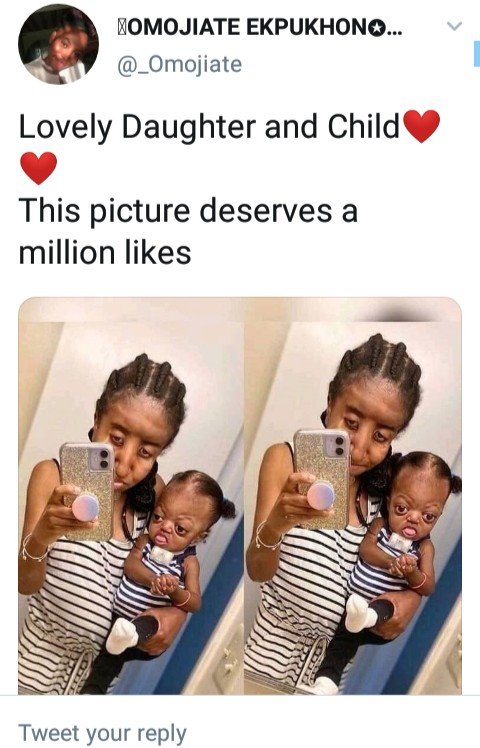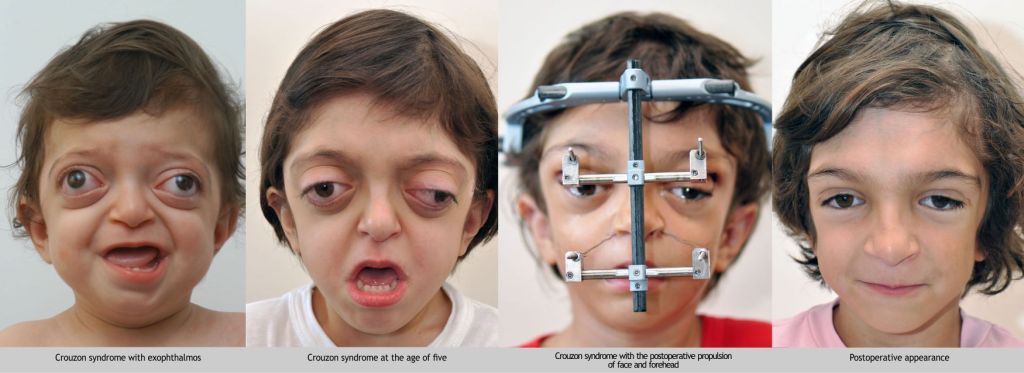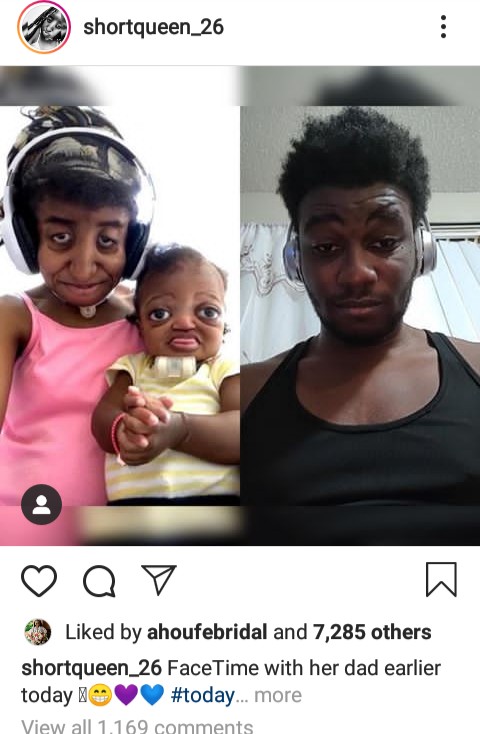Apart from the medical professionals, how old were you when heard about Crouzon Syndrome?
I stumbled upon it on social media just like you will know about this genetic disorder today.
Okay, someone posted something on Twitter with the caption “Lovely Daughter and Child. This picture deserves a million likes”

When I saw the image in the post, I thought the mother and daughter in the photo were victims of a fire outbreak or it was even a filter.
Not until I read the mixed comments and saw that it was a genetic disorder named Crouzon Syndrome (I will share some of these comments below).
Never thought that we have a genetic disorder that could cause someone to look an alien or like someone attacked with acid.
I was triggered to know more about this disease and so, I research and decided to share with you.
Continue reading to know more about Crouzon Syndrome, its symptoms, causes, diagnosis, and treatment.
Contents
- What is Crouzon Syndrome?
- Signs and Symptoms
- Crouzon Syndrome Complications
- What are the Causes?
- Diagnosis
- How is Crouzon Syndrome Treated?
What is Crouzon Syndrome?
Crouzon Syndrome is a rare genetic disorder that occurs when the flexible sutures in the skull of a baby turn to bone and fuse prematurely.
Premature fusion of a baby’s skull is the feature of a condition known as craniosynostosis.
How does this happen?
On a normal condition, the sutures (seam) in the skull of a baby stay open to allow the brain to grow. But when these sutures fuse (close) too early as the baby’s brain keeps growing, it prevents the normal growth of the skull, affects its shape (head), as well as the face.
Named after Octave Crouzon, a French-born Neurologist, the disease was first named craniofacial dysostosis (craniofacial describes the skull and face, while dysostosis refers to the malfunction of the bone).
Statistics have it that about 5% of people who has craniosynostosis are affected by Crouzon Syndrome.
Signs and symptoms
The characteristics of Crouzon Syndrome mainly results from the premature closure of a baby’s skull bones. And these signs/features usually start in the first year of a baby’s life and progress until 2 to 3 years of age.
Common signs/characteristics of this abnormal skull growth include:
- Having bulging eyes and problems with vision that is caused by shallow eyes sockets.
- Strabismus (eyes pointing at different direction)
- A beaked nose
- Small upper jaw
- Dental problems as a result of over-crowded teeth.
- Hearing loss as a result of narrow ear canals.
- Cleft lip and Palate
- People with Crouzon Syndrome may experience seizures and headaches.
NB: Most Crouzon Syndrome patients do not experience learning problems or mental retardation. Also, how severe the signs and symptoms are, varies from one affected person to another.
Crouzon Syndrome Complications
Apart from the symptoms and features above, this syndrome can get complicated in some people and these complications include:
- Loss of vision
- Loss of hearing
- Inflammation of the membrane lining the cornea
- Inflammation in the front of the eyes
- Hydrocephalus
- Problems in breathing
What are the Causes?
Crouzon Syndrome is associated with two genes called the FGFR2 and FGFR3. FGFR is an acronym for Fibroblast Growth Factor Receptor.
This syndrome is caused by gene mutations. There are four FGFR genes which are involved in bones growth and the most common gene linked with Crouzon Syndrome is FGFR2. The FGFR3 gene is less often affected.
Mutations affect specific protein functions in the body. As a baby grows in the womb, the fibroblast (protein) sends signals to form the bone cells. When mutations occur in this case, the signals are increased, and the bones develop rapidly. This leads to early fusion of the baby’s skull.
The gene mutation can spontaneously occur in about 25 to 50% of people that have Crouzon Syndrome. This means that a baby can have Crouzon syndrome even though the parent doesn’t have the disorder.
The baby can inherit one copy of this gene mutation from a parent to get the disorder. If you as a parent have this condition, your children’s chance of inheriting it is 50-50 and this inheritance pattern is referred to as Autosomal Dominant.
In some cases, people that have Crouzon Syndrome are affected with a skin condition called acanthosis nigiricans, and in this situation the FGFR3 is responsible. Acanthosis nigiricans leads to an increase in pigmentation and thickness in some parts of the skin. This increase can occur in any part on the body but usually happen in moveable areas.
Diagnosis
A doctor can diagnose Crouzon syndrome by doing the following:
- Carefully examining the skull and face of the baby
- Using imaging tests (Computed tomography (CT), Magnetic Resonance Imaging (MRI), and X-rays) to look for increased pressure in the baby’s skull or fused sutures.
- Doing prenatal tests to find mutations in the FGFR2 gene.
How is Crouzon Syndrome Treated?
Children that have mild signs of Crouzon Syndrome may not need treatment. However, those that have severe cases of the disorder should consult a craniofacial specialist or doctors that treat skull and face disorders.

In more severe medical cases, doctors can perform surgery to-
- Fix a palate or cleft lip
- Correct vision problems
- Fix crooked teeth
- Open the prematurely fused sutures
After surgery, children will have to wear a special helmet to reshape their skull for a few months.
As regards hearing problems, they will be given hearing aids to enhance sound. They may also undergo language and speech therapy.
Back to the comments in that tweet, many tweeps think that the affected mother should have adopted a baby instead of bringing an innocent child to the world to suffer.
Click here to read more on Risk to Family Members and Related Genetic Counseling Issues concerning Crouzon Syndrome.
Some funny ones asked to see the father- to know if he was normal and why he would marry a woman with Crouzon Syndrome.
Here is a photo of the father (normal) of that family:

In my opinion, the latter comments were not fair as these people didn’t bring this syndrome upon themselves and thus shouldn’t be treated as outcasts.
Here are the comments below:
Thanks for taking time to read this blog post. Kindly subscribe for free to Gechy’s Blog and share this post.











